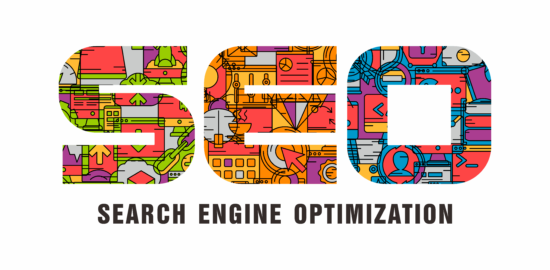4 Ways Search Engine Marketing Has Changed In 2018
Search engine marketing is about people and connecting to them. With so many good causes and community contributors, it can be challenging to make your voice heard. As an NGO, you face unique hurdles when it comes to marketing yourself and your cause.
The emerging trends in search engine marketing (SEM) add a deeper complexity.
Unlike the for-profit world, you do not sell a product. You do not sell a service. You advance a valuable mission and your goal is to grow awareness, nurture and attract donors, and engage volunteers. This means you have to market to a much wider segment of the population, which is especially challenging when it comes to search engine marketing.
For this reason, staying abreast of the latest changes in SEM is absolutely essential. Here is what to expect in the SEM arena in 2018:
Get Prepared For Voice Search
Alexa. Alexa is jostling elbows with Google Home, and Sonos One. Siri, or more commonly known as “Hey Siri”, is not known for accuracy, was an early entrant that seems stalled today. Now, however, voice search has taken on a broader meaning entirely. By 2022, over 55% of U.S. households will own a smart speaker and this number is expected to grow rapidly.
Uniquely, with voice search, search rankings are very different. Instead of providing an entire page of search results, the result is just singular. That means, if you want your NGO to be ranked in a voice search, it needs to be THE result.
Google Voice Search and similar technologies use natural language processing to “learn” voice commands. This means that, over time, voice, speech patterns, browsing interests, and personal information will inform individualized search results. Google AdWords users can be more effective in outreach by serving tailored, relevant search results.
Concentrate On Customer Success (CX)
Many marketers tend to get confused by user experience and the user interface. How your website looks is the user interface. How your website acts is user experience. And while the user interface can make your website look pretty, a pretty website that does not perform will distract your users and make them click away from your site.
But a poor UX goes far beyond just aggravating a few site visitors. Google now uses UX in their algorithm to rank for mobile searches. If you have a glitchy UX, you are going to have an uphill battle ranking on the first page of any mobile search. Customer success involves getting UI and UX right. The goal is to understand your user base and provide them with a seamless path to ultimate customer success.
Why is this important? There’s a shift to online giving. For instance, millennials belong to a powerful and dynamic generation. They embrace technology. Online giving to small nonprofits grew 10.7%, medium organizations grew 14.9% and large organizations grew by 11.0%. Therefore, for NGOs, one area of the website where UX should always run flawlessly is on the donation function. Customer success is key because significant funds can be lost if you make it difficult for donors to contribute.
Think Mobile, If You Haven’t Already
The majority of Google searches happen on smartphones. Google wants to make search results more useful and has altered their algorithm to prioritize mobile-friendly sites in search rankings. This makes the SEM situation in 2018 crystal clear: All SEM must be mobile-friendly, including PPC ads and using best mobile practices for AdWords.
Here are tips to help with your optimization:
- If you have not done so already, develop a mobile site no matter what.
- Don’t dumb down content on your mobile site. Verify content consistency between mobile and desktop by comparing the output. Use this Google tool to help understand and correct the gaps.
- A robots.txt code blocks search engines from indexing a page. This is useful if you want to keep certain pages private from search engines. For the majority of pages, ensure your website does not block Google’s web crawlers. Use this Google tool to locate and fix the code.
- If you’ve only identified the desktop version of your website, use Google’s Search Console to verify the mobile version. Google confirms site ownership, giving you access to the Google Search data and improves how bots crawl and index your site.
It’s important to tell your story. Images help. I’ve found them useful for Google rankings. Images will not only improve website accessibility and assist screen readers for the visually impaired but will help drive your website higher up in search results. Try this simple tip: when saving your website pictures, make sure to use image alt tags.
Check this out. Try Googling your organization’s name, then press the “Images” or “Videos” tab and see how well you’re doing. If you don’t see any website images, make it a practice to use alt tags by describing the image and use relevant keywords the next time you save visual content.
Lastly, post a phone number and map integration allowing Google queries to call or find you directly from the top of the Google search rankings.
Make Connections Count
There’s a strong need for nonprofits to connect with donors and engage their interests where they are online. I’ve found it helpful to use an omnichannel approach. I also use search engine marketing techniques to serve up relevant content to the right audiences. Today I Googled my name. My blog came up in the top position. Under it, I noticed my latest tweet. Recycling or repurposing content that addresses different audiences on different platforms saves time, expands reach, and offers up information on the various networks used by your constituents.
It’s a scary world out there. Technology is changing fast. There’s so much to do and limited resources. Where can you start? Start with your website and make it assessable and user-friendly. Use donate now functionality. Then, in time start rethinking your donors and the new ones you want to reach. Segment them and figure out how to reach them with the right content on the devices they use. It’s not just about posting a blog, for instance. A banner ad could drive traffic to the blog. An image that shows the work you do in the world with a simple call to action builds awareness if anything and click-through when relevant to them.
Recently I saw a banner ad on Facebook with an adorable brown-eyed dog. The caption said to donate now and help animal rights. That pulled at my heartstrings and I immediately clicked and donated. Then I saw a video of elephants and how they greet each other by smooshing their heads (and trunks) together. Oh gosh, yes, I donated from that video too. Some may say I’m nuts to click on those banner ads and videos, but when it comes to animal rights and advancing their cause, I click away. This is search engine marketing at its best.
To learn more about how search engine marketing is changing in 2018 check out this blog.









